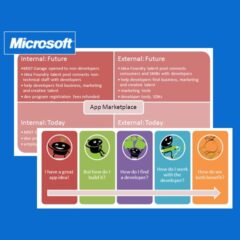Mar05
I just returned from Publishing Expo 2012 in London, where I was interested (among many other things) to see what newspaper and magazine publishers were doing in the area of offline delivery, or content-to-go. Print has long had the advantage of being able to travel easily with the reader. So in the transition from print to digital delivery, the ability to save stories on a device for offline viewing (available when there is no Internet connection, such as in a subway or on an airplane) is still a necessary requirement. It’s worth mentioning that subway systems and airlines are already experimenting with wireless Internet, so “offline storage options” can be considered a transitional technology until the day, not too far off, when the Internet cloud will available almost everywhere. When that happens, offline portability of news will cease to matter. This is already a vision that companies like Microsoft and Google are touting for corporate information and office applications. But today I am interested in what publishers are doing with digital editions–the online version laid out more or less precisely like their print edition–and how many are moving toward tablet and mobile apps capable of storing articles on the...
Feb24
As newspapers make the transition from print to online, they need to understand the importance of adjusting their editorial style to fit the new medium. I should quote Marshall McLuhan, but years ago I worked with tech writer and information architect Freda Salatino, who used to say (in her Long Island accent), “When you create an online help system from a user guide, don’t just schlep the book online.” Like McLuhan, her point was that online is used differently from print, and that certainly holds true for news as well. The easiest and most important lesson is in how you use images. Print papers don’t put a photo with ever story. With online stories, photos should be the rule, not the exception. Online is now a multimedia experience. This is in part why forward-thinking news executives like John Paton issued Flip video cameras to all his journalists, and why every reporter in the DNAinfo newsroom carries a camera. With smartphones now boasting high-resolution cameras and high-def video, there is no longer an excuse for a journalist not carrying a camera in his or her pocket. Why can’t you ignore putting photos on the bulk of your stories? Here are...
Feb21
Analytics Overview Late last summer the good folks at MSN invited me to give a talk on “Conducting Effective Market Landscape Assessments and Intelligence Gathering” where I discussed techniques for gathering competitive intelligence for MSN.com. One of the important topics I covered was how analytics–research based on observational data gathering–is critical to understanding visitor and market behavior. There are actually a few types of analytics. Web Server Log Reports (site statistics) are the oldest form of analytics, typified by products like WebTrends and a host of Open Source products like AWStats. These systems report on the data collected in log files maintained by your webserver, logs that track the time and date stamp of every web page and every image served up by the webserver. Site stats deliver reports such as most popular pages on your site, top entry pages, top exit pages, overall pages served, and overall number of “hits” (the number of resources served by the webserver, now considered an almost meaningless metric, since these days a single web page with 4 javascript calls and 12 images represents 17 hits). Path Analysis is used to track every individual who comes to a site, and every page they visit....










